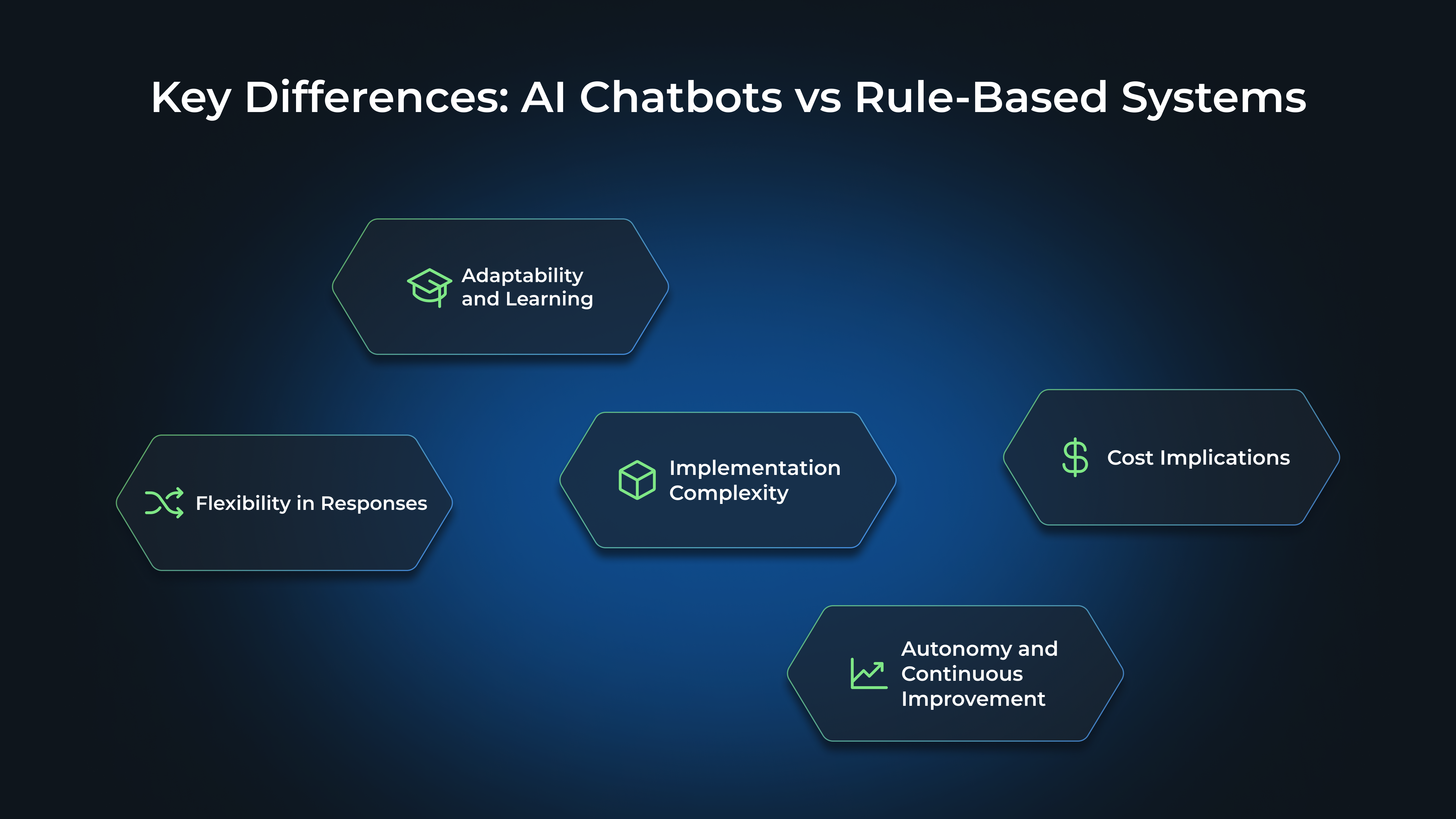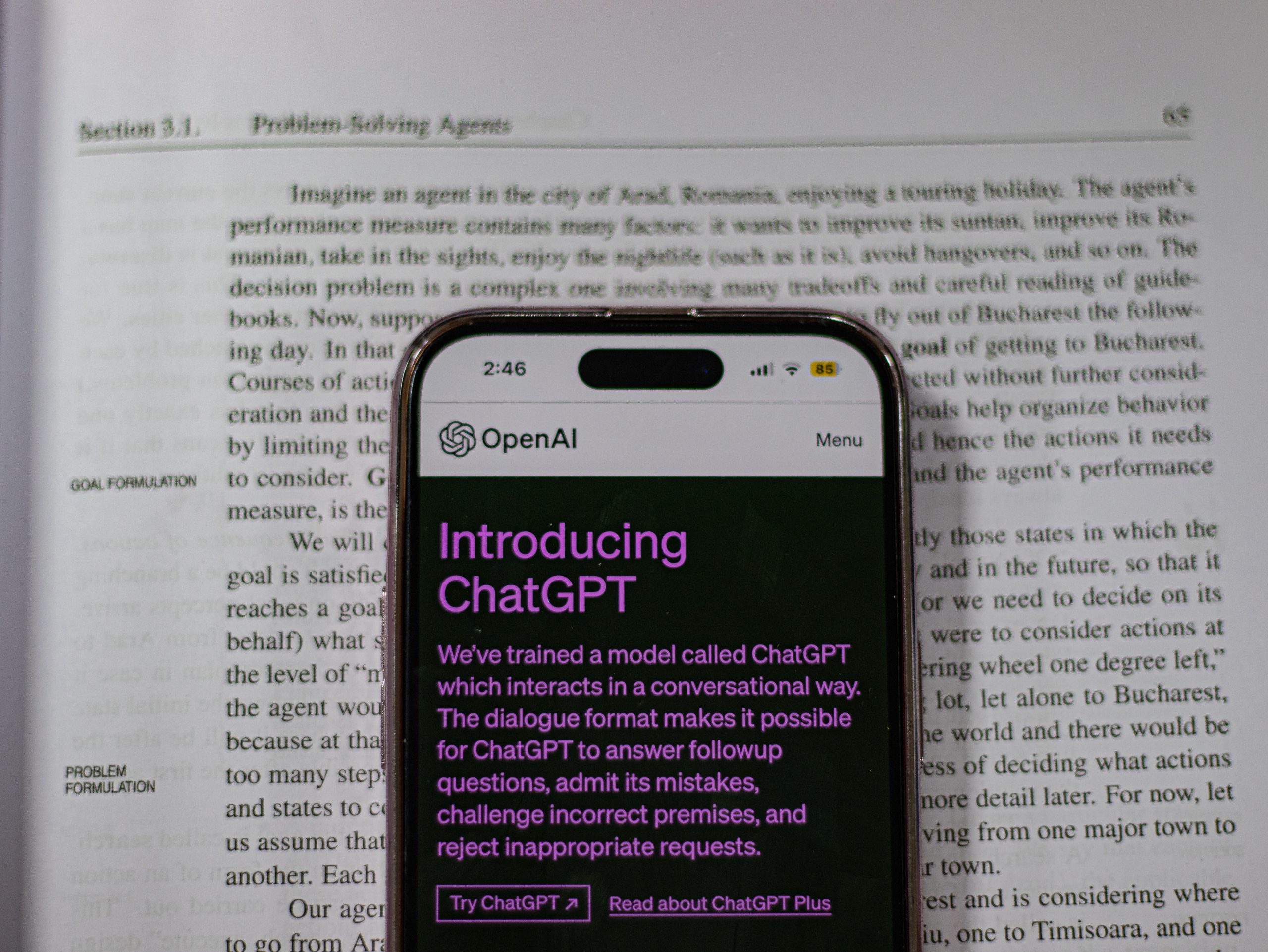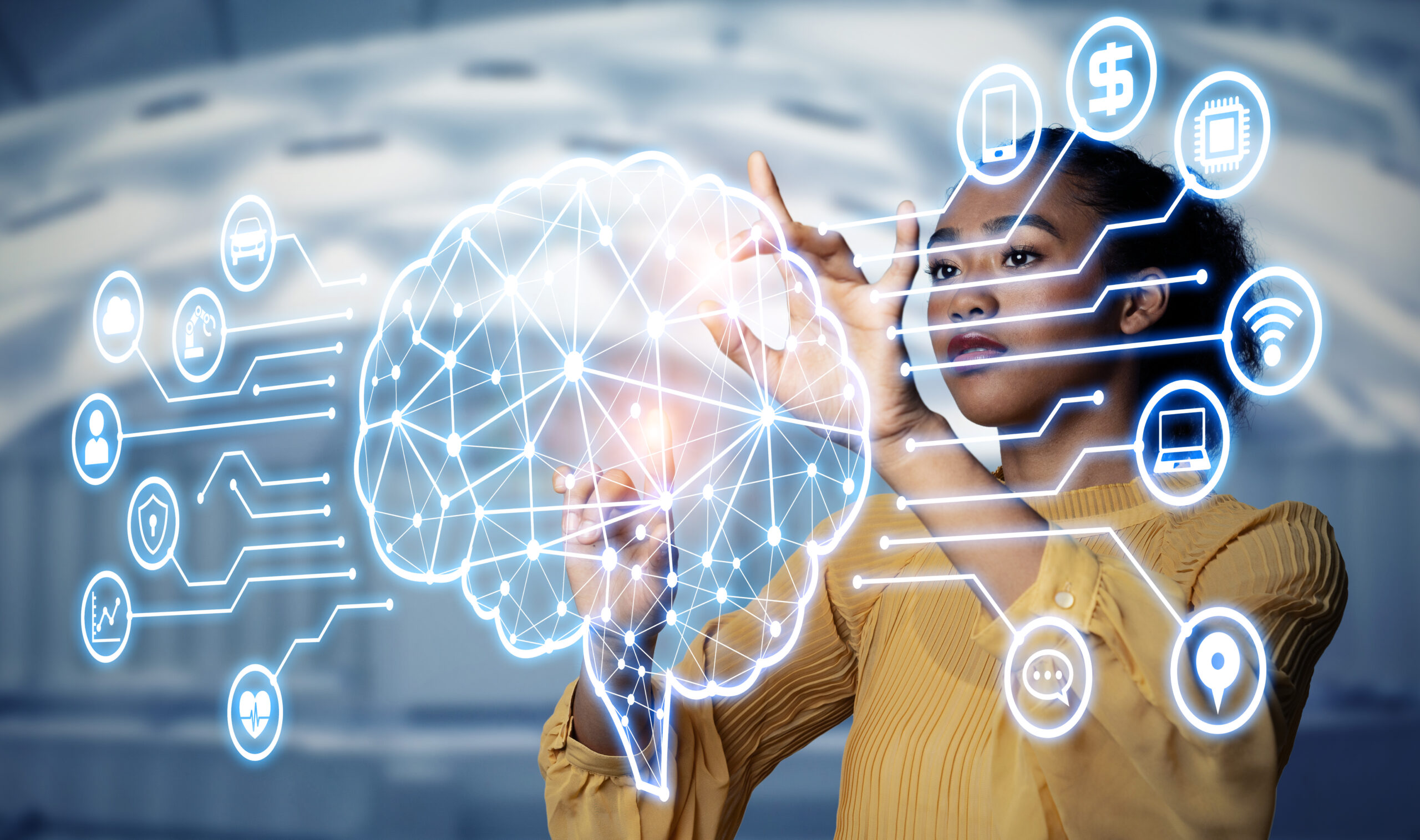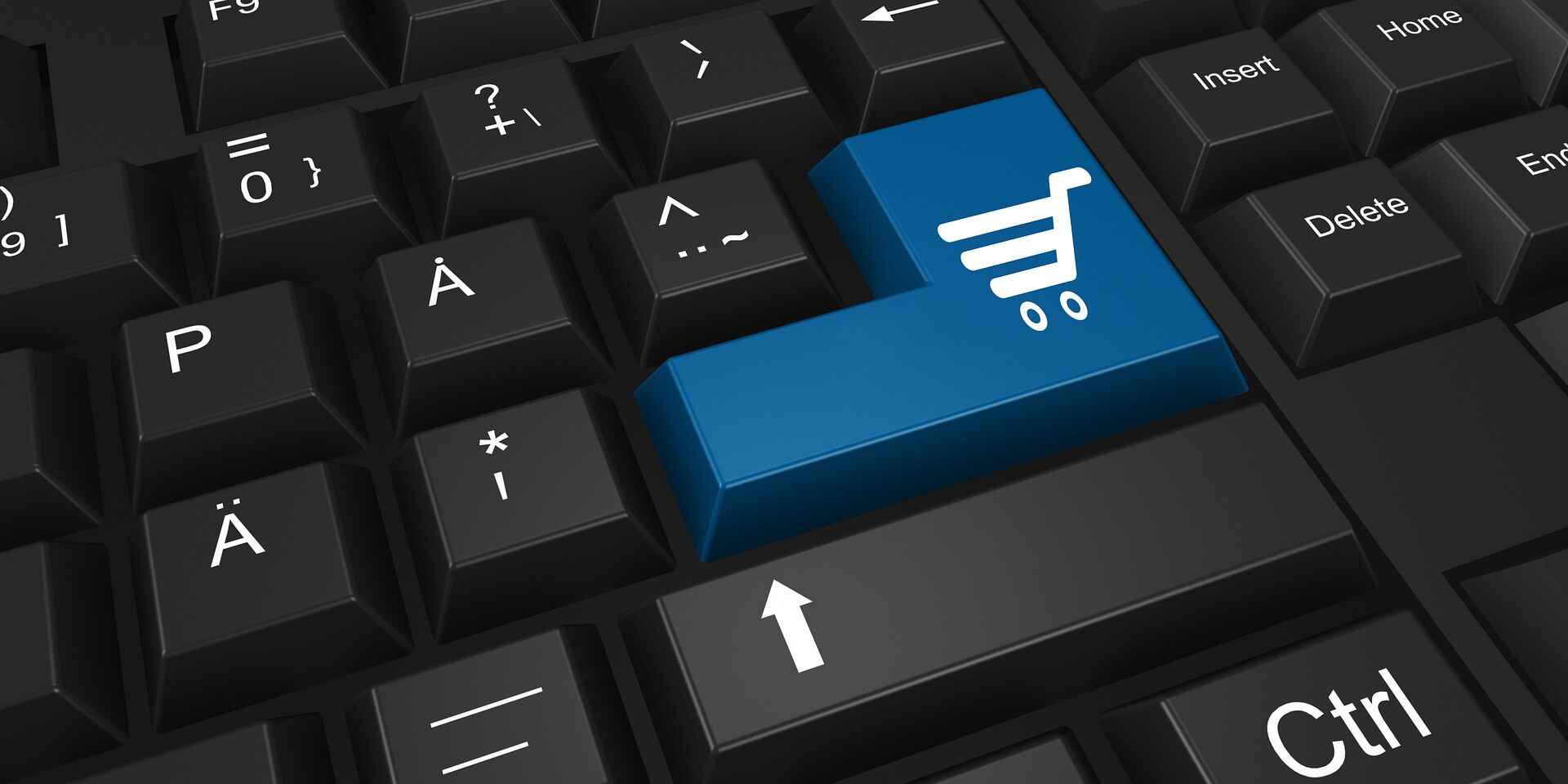We at WeSoftYou understand the evolving landscape of software solutions and the need for businesses to stay ahead in their customer service strategies. One of the emerging technologies that has gained traction is chatbots. However, not all chatbots are created equal. In this article, we will explore the fundamental differences between AI chatbots and rule-based systems, helping you make an informed decision on which approach is best for your business.
Rule-Based Systems and AI Chatbots
Before diving into the differences, let’s first define what AI chatbots and rule-based systems are.
AI chatbots, as the name suggests, are powered by artificial intelligence technologies. They leverage machine learning and natural language processing to understand and respond to user inputs in a conversational manner. AI chatbots are designed to continuously learn and adapt based on user interactions and feedback, improving their responses over time.
These chatbots are built with sophisticated algorithms that enable them to analyze and interpret user messages, extracting meaning and context from the input. By understanding the intent behind the user’s query, AI chatbots can provide accurate and relevant responses, making the conversation feel more natural and human-like.
Furthermore, AI chatbots can handle complex conversations and engage in multi-turn dialogues. They have the ability to remember previous interactions and maintain context throughout the conversation. This allows for a more personalized and interactive user experience, as the chatbot can recall information from previous exchanges and provide tailored responses.
On the other hand, rule-based systems operate on a predefined set of rules and responses. These rules are created by human developers and determine how the chatbot interacts with users. Rule-based systems do not have the capability to learn or adapt beyond what is explicitly programmed into them.
These systems are typically designed with a decision tree-like structure, where each rule represents a specific condition and corresponding action. When a user input matches a predefined condition, the chatbot follows the associated rule and provides the corresponding response. However, if a user input does not match any of the predefined conditions, the chatbot may struggle to provide a meaningful or relevant response.
While rule-based systems lack the ability to learn and adapt, they can still be effective in certain scenarios. They are often used in situations where the domain is well-defined and the possible user inputs are limited. For example, a rule-based chatbot can be employed in a customer service setting to answer frequently asked questions or provide basic information.
In summary, AI chatbots and rule-based systems differ in their underlying technologies and capabilities. AI chatbots leverage artificial intelligence, machine learning, and natural language processing to provide intelligent and adaptive responses. Rule-based systems, on the other hand, rely on predefined rules and responses, making them more suitable for simpler and more structured interactions.
How do AI Chatbots Work?
In order to comprehend the power of AI chatbots, it’s essential to explore the underlying technologies that make them work.
AI chatbots are not just simple programs that respond to user input. They are powered by advanced technologies such as machine learning and natural language processing, which enable them to understand and generate human-like conversation.
Machine Learning and Natural Language Processing
AI chatbots utilize machine learning algorithms to understand and interpret user input. These algorithms train chatbots to recognize patterns and context in human language, enabling them to provide relevant and accurate responses.
Machine learning algorithms work by analyzing large amounts of data and identifying patterns. In the case of AI chatbots, these algorithms are trained on vast datasets of human conversations, allowing them to learn the intricacies of language and how people communicate.
But machine learning alone is not enough to create truly intelligent chatbots. That’s where natural language processing (NLP) comes into play. NLP algorithms further enhance the chatbot’s ability to understand and generate human-like conversation.
NLP algorithms enable chatbots to understand the meaning behind words and phrases, as well as the context in which they are used. This allows them to provide responses that are not only grammatically correct but also contextually relevant.
Continuous Learning and Adaptation
One significant advantage of AI chatbots is their ability to learn and adapt continuously. Through user interactions and feedback, AI chatbots can refine their responses and improve their understanding of user needs.
When a user interacts with an AI chatbot, the chatbot analyzes the conversation and identifies areas where it can improve. It takes note of the user’s preferences, their language patterns, and the context in which they are communicating. This information is then used to enhance the chatbot’s future interactions with the same user.
Furthermore, AI chatbots can also learn from the collective interactions of all users. They can analyze the conversations they have had with different users and identify common patterns and trends. This allows them to improve their responses and provide a more personalized experience to each user.
This continuous learning and adaptation enable AI chatbots to handle complex scenarios and provide accurate and relevant information to users. They can understand user intent, provide recommendations, and even engage in small talk, making the conversation feel more natural and human-like.
In conclusion, the inner workings of AI chatbots involve advanced technologies like machine learning and natural language processing. These technologies enable chatbots to understand and generate human-like conversation, while continuous learning and adaptation allow them to improve their responses and provide personalized experiences to users.
How Do Rule-Based Systems Work?
Rule-based systems are a type of chatbot that operate based on predefined rules and responses. Unlike AI chatbots, which use machine learning algorithms to understand and respond to user queries, rule-based systems follow a structured approach by setting up rules that dictate how the chatbot should respond to various inputs.
Developers of rule-based systems must anticipate potential user queries and create corresponding rules in advance. These rules act as a guide for the chatbot, enabling it to provide accurate responses. By defining specific patterns and keywords, developers can ensure that the chatbot understands and responds appropriately to user inputs.
While rule-based systems can yield accurate responses, they do have limitations. One of the main limitations is their inability to handle novel or complex scenarios. Since rule-based systems rely on predefined rules, they struggle to provide satisfactory responses outside of their predetermined scope. This means that if a user asks a question that the chatbot was not programmed to handle, it may not be able to provide a meaningful response.
Another limitation of rule-based systems is their lack of learning and adaptation capabilities. Unlike AI chatbots, which can learn from user interactions and improve over time, rule-based systems are static and do not have the ability to learn or adapt beyond their predefined rules. This means that even if a rule-based system encounters a similar query multiple times, it will not be able to improve its response based on past interactions.
Despite these limitations, rule-based systems can still be useful in certain scenarios. They are often used in situations where the domain is well-defined and the range of possible user queries is limited. For example, a rule-based system might be used in a customer support chatbot that provides answers to frequently asked questions. In such cases, the predefined rules can be carefully crafted to cover the most common user queries, ensuring that the chatbot provides accurate and helpful responses.
AI Chatbots and Rule-Based Systems: Key Differences

Now that we understand the inner workings of both AI chatbots and rule-based systems, let’s explore the key differences that set them apart.
- Adaptability and Learning. AI chatbots outshine rule-based systems with their unparalleled adaptability and continuous learning capabilities. These sophisticated conversational agents have the ability to comprehend user intent and context in a nuanced manner, resulting in a more seamless and personalized user experience. Unlike rule-based systems, AI chatbots evolve over time, enhancing their responses based on user interactions, thereby adapting to changing needs and preferences.
- Flexibility in Responses. The dynamic nature of AI chatbots becomes evident in their flexible responses, which can adjust to the user’s tone, emotions, and individual preferences. This adaptability enables AI chatbots to excel in a variety of situations, offering a more engaging and user-centric experience. In contrast, rule-based systems, while effective in straightforward scenarios, lack the flexibility to handle the intricacies of diverse user queries, often falling short in delivering satisfactory responses.
- Implementation Complexity. The implementation of AI chatbots demands a high level of expertise in machine learning and natural language processing. These systems undergo complex training processes involving vast datasets to ensure they grasp the nuances of language, context, and user interactions. On the other hand, rule-based systems are comparatively simpler to implement, relying on predefined rules crafted by human experts who possess a deep understanding of the specific domain and problem at hand.
- Cost Implications. Despite the higher upfront investment required for their complex implementation, AI chatbots prove to be cost-effective in the long run. Their autonomous learning and adaptability reduce the need for constant manual intervention, leading to sustained savings. In contrast, rule-based systems may appear cost-effective initially due to their reliance on predefined rules, but ongoing manual rule creation and maintenance can result in higher long-term costs as they encounter new scenarios and requirements.
- Autonomy and Continuous Improvement. The autonomy of AI chatbots sets them apart as they continuously gather insights from user interactions, improving their responses and offering personalized interactions. In scenarios like e-commerce, an AI chatbot can leverage accumulated data to provide tailored product recommendations and anticipate customer needs. In contrast, rule-based systems lack autonomous learning capabilities, relying on manual updates by human experts to adapt to new scenarios. This difference underscores the distinct advantages of AI chatbots in terms of continuous improvement and autonomous operation.
In conclusion, AI chatbots and rule-based systems have distinct differences in terms of flexibility, complexity of implementation, and cost implications. AI chatbots offer enhanced adaptability and personalization, but require expertise in machine learning and natural language processing. Rule-based systems are simpler to implement but lack the intelligence and learning capabilities of AI chatbots. The choice between the two depends on the specific requirements and goals of the application.
Choosing Between AI Chatbots and Rule-based Systems
When deciding between AI chatbots and rule-based systems, it’s crucial to consider your business’s unique needs and requirements.
AI chatbots and rule-based systems are two distinct approaches to customer service automation, each with its own advantages and limitations. Understanding these differences can help you make an informed decision that aligns with your business goals.
Assessing Your Business Needs
Take an in-depth look at your customer service goals, the complexity of queries you expect, and the level of personalization you aim to provide. If you anticipate frequent changes or complex interactions, AI chatbots may be the more suitable choice.
AI chatbots leverage artificial intelligence and natural language processing to understand and respond to customer queries in a conversational manner. They can learn from interactions and adapt their responses over time, providing a more personalized experience. This flexibility makes them well-suited for businesses that deal with a wide range of customer inquiries.
On the other hand, if your customer interactions are relatively straightforward and follow predefined patterns, rule-based systems can be a viable option. Rule-based systems operate on a set of predetermined rules and responses, making them more predictable and easier to implement.
Evaluating the Pros and Cons
We recommend evaluating the pros and cons of each approach within the context of your business. AI chatbots offer flexibility, adaptability, and sophisticated learning capabilities, but come with higher upfront costs.
With AI chatbots, you can provide a more personalized and human-like customer experience. They can handle complex queries, understand context, and even detect emotions, allowing for more meaningful interactions. Additionally, AI chatbots can continuously learn and improve their responses based on customer feedback, ensuring a higher level of customer satisfaction.
However, implementing AI chatbots requires significant investment in terms of development, training, and maintenance. You need to have access to quality data for training the AI models and may require the expertise of data scientists and machine learning engineers.
On the other hand, rule-based systems are simpler and more cost-effective initially. They operate based on predefined rules and responses, making them easier to set up and maintain. Rule-based systems are suitable for businesses with standardized and predictable customer interactions.
However, rule-based systems have limitations when it comes to handling complex or unique queries. They lack the ability to learn and adapt beyond their predefined rules, which means they may not provide the same level of personalization and flexibility as AI chatbots.
In conclusion, choosing between AI chatbots and rule-based systems requires a careful evaluation of your business needs, customer service goals, and budget. AI chatbots offer advanced capabilities and adaptability but come with higher costs. Rule-based systems are simpler and more cost-effective but may not provide the same level of personalization. Consider your specific requirements and consult with experts to make an informed decision that aligns with your business objectives.
The Future of Chatbots: AI or Rule-Based?
As technology continues to advance, the future of chatbots seems to lean toward AI-driven solutions. However, it is important to consider both AI and rule-based chatbots in order to make an informed decision.
Predictions and Trends
Industry experts predict that AI chatbots will dominate the market, driven by advancements in natural language processing and machine learning. The ability of AI chatbots to provide personalized, context-aware experiences makes them increasingly valuable in enhancing customer service and streamlining business operations.
AI chatbots are capable of analyzing vast amounts of data and learning from user interactions, allowing them to continuously improve their responses. This enables them to handle complex queries and adapt to changing user needs more effectively than rule-based chatbots.
Impact on Customer Service and Business Operations
AI chatbots have the potential to revolutionize customer service by delivering quicker, more accurate, and personalized responses. With their ability to understand and interpret natural language, AI chatbots can provide a human-like conversational experience, making customers feel heard and understood.
Moreover, businesses can streamline their operations by automating repetitive tasks through AI chatbots. This frees up valuable human resources for more critical functions, allowing employees to focus on tasks that require creativity and problem-solving skills.
From our experience as a software development company with a proven track record, we have witnessed the power of AI chatbots in transforming customer service and driving business growth. By implementing AI chatbots, businesses can provide round-the-clock support, improve response times, and enhance overall customer satisfaction.
However, it is important to note that rule-based chatbots still have their place in certain scenarios. Rule-based chatbots are typically easier to implement and maintain, making them a suitable choice for businesses with limited resources or specific use cases that do not require advanced AI capabilities.
Whether you choose an AI chatbot or a rule-based system, partnering with the right software development company can ensure a successful implementation. A software development company with expertise in chatbot development can help you assess your specific needs, recommend the most suitable solution, and guide you through the implementation process.
In conclusion, while AI chatbots are expected to dominate the market in the future, it is important to consider the specific requirements and limitations of your business before making a decision. Both AI and rule-based chatbots have their advantages and can be valuable tools in enhancing customer service and streamlining business operations.
Conclusion
In conclusion, the difference between AI chatbots and rule-based systems lies in their underlying technologies and capabilities. While rule-based systems offer simplicity, AI chatbots provide adaptability, sophistication, and the potential for enhanced customer experiences. Assessing your business needs and evaluating the advantages and drawbacks of each approach will help you make an informed decision.
Looking to integrate chatbot technology into your business? We at WeSoftYou are here to help. Contact us today for a free consultation or project estimation. Let us harness the power of AI chatbots or rule-based systems to elevate your customer service strategy.
FAQ
AI chatbots are powered by artificial intelligence algorithms that enable them to learn and adapt based on user interactions. They can understand natural language and provide more personalized responses. On the other hand, rule-based systems rely on predefined rules and patterns to generate responses. They are less flexible and require manual updates to handle new scenarios.
The choice between AI chatbots and rule-based systems depends on your specific business needs. If you require a chatbot that can handle complex queries, learn from user interactions, and provide personalized responses, then an AI chatbot would be the ideal choice. However, if your requirements are relatively simple and you prefer a more controlled and predictable chatbot, a rule-based system might be more suitable.
When considering the long-term cost implications, it’s important to evaluate factors such as development, maintenance, and scalability. AI chatbots may require more initial investment due to their complex algorithms and training processes. However, they can potentially reduce costs in the long run by automating customer service and improving operational efficiency. Rule-based systems, on the other hand, may have lower upfront costs but might require more manual updates and maintenance over time.
Chatbots have the potential to revolutionize customer service and business operations. By providing instant responses and 24/7 availability, chatbots can improve customer satisfaction and engagement. They can handle repetitive tasks, such as answering frequently asked questions, freeing up human agents to focus on more complex and value-added activities. Chatbots can also collect valuable data and insights from customer interactions, enabling businesses to make data-driven decisions and improve their overall operations.





















